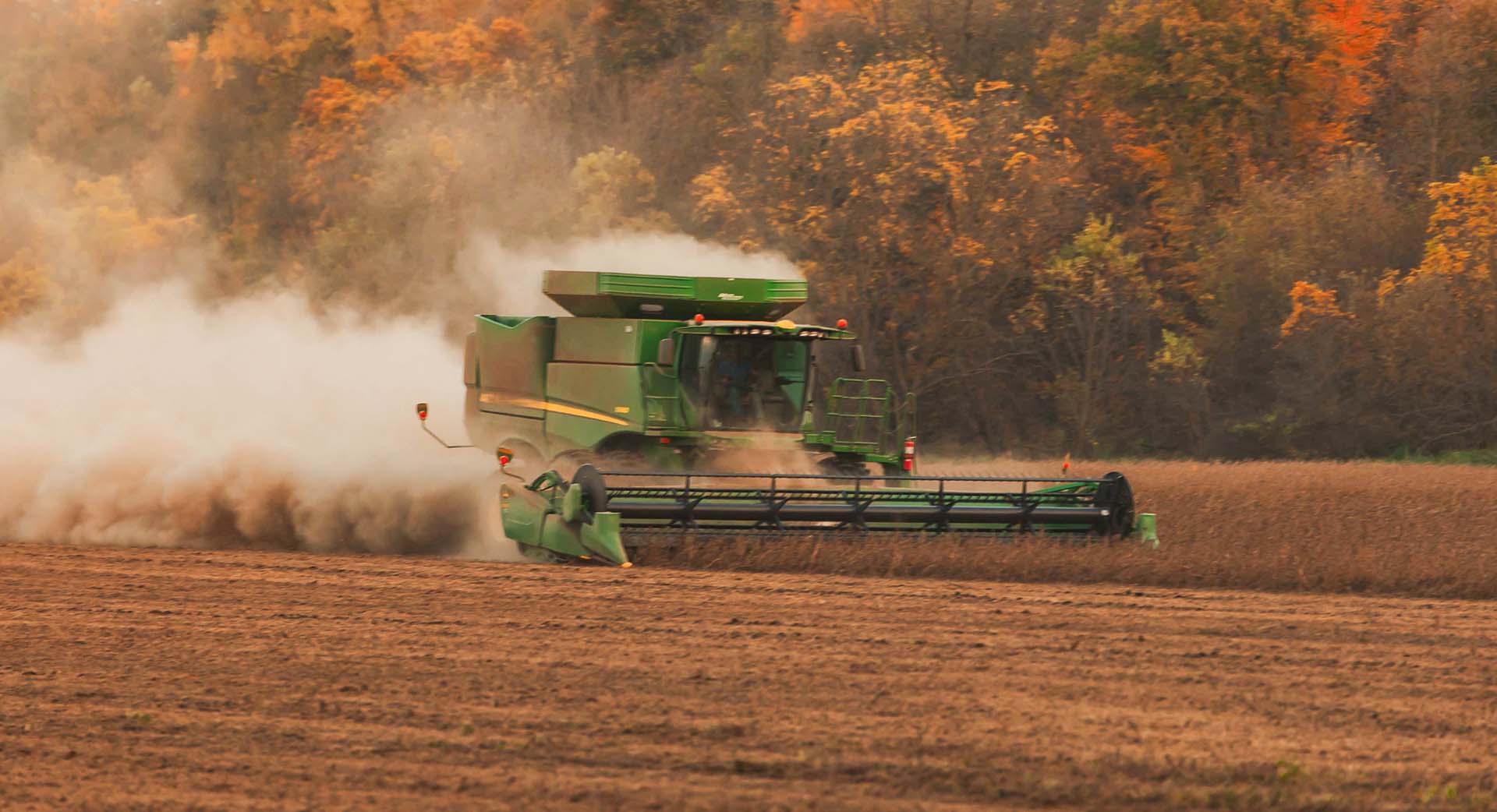
(Photo: Iowa Soybean Association / Joclyn Bushman)
Hot, windy, dry conditions recipe for field fires
October 10, 2024
In the last couple of weeks, field fires have dotted the Iowa landscape thanks to unusually warm temperatures and dry, windy conditions.
“Harvest is speeding along with the stable weather pattern we’re experiencing. With the unseasonably warm and dry conditions, coupled with low dewpoints and wind, the chances of field fires are high,” says State Climatologist Justin Glisan. “These fires, in the presence of gusty winds and plenty of fuel drying down in the field can rapidly get out of control. Any type of ‘controlled burning’ or machine friction out in the field can start a fire, both in the combine or out.”
In central Iowa, a structure and field fire near Melbourne in Marshall County spread over several acres, requiring fire departments from Melbourne, Clemons, State Center, Haverhill, Ferguson, Laurel, Rhodes and Baxter to contain the blaze.
Multiple field fires in southwest Iowa have also been sparked.
The Shenandoah Fire Department was dispatched along with Coin Fire and Rescue to a growing fire in a standing bean field. Due to the weather conditions, additional support was requested, and several other fire departments and farmers arrived to help.
Meanwhile, three fire departments responded to a bean field last weekend in Montgomery County.
Red Oak, Stanton and Elliott Fire Departments responded to the field fire just outside of Red Oak. The fire was believed to have originated from the arching of wind-blown overhead powerlines.
Multiple fire departments were on call following a field fire south of Stanhope last weekend.
Stanhope Fire was initially called to the fire, but because of the windy conditions and dry fields the fire quickly spread and firefighters from Jewell, Stratford, Kamrar, Webster City, Ellsworth, Story City, Boone, Gilbert and Roland aided in extinguishing the blaze.
And in northwest Iowa, multiple blazes have been reported recently.
The Doon Fire Department responded to a report of a combine fire. Firefighters were able to extinguish the fire using water and foam. While it’s not clear yet what started the fire, officials believe it started in the engine bay of the combine and gusty winds may have contributed to the fire.
Inwood firefighters were called to a field fire which was actually two fires coming from bean stubble Firefighters fought the fire on the edges with water, but they received assistance from about 10 farmers who brought their tractors and discs as soon as they saw the smoke. The cause remains undetermined, but it is suspected something hot under the combine may have started the fires. About 50 acres of stalks and stubble burned, along with nearly five acres of standing corn.
And then there was a field fire near Hull, in which 20 acres of soybeans were destroyed. The Hull Fire Department along with firefighters from Rock Valley and Boyden fought the blaze, with help from 12 farmers with tractors and discs to disc firebreaks.
Safety first
Along with their standard equipment, farmers are also bringing out water carts during the harvest season should something spark.
Iowa Soybean Association Board Treasurer Lee Brooke of Clarinda says during this time of year, anticipating the worst is part of his safety routine.
He says he has water fire extinguishers on the combines and regular fire extinguishers in all vehicles. The veteran farmer says he wants to be prepared, especially when conditions are windy, hot and dry, or if a bearing goes out and starts a fire.
“You have to check your equipment, grease the parts daily and look for those issues,” he says. “A loose piece of metal can start a fire quickly.”
And last week, Iowa Secretary of Agriculture Mike Naig urged producers to be mindful of potential fire hazards.
“Although suitable for harvest, these warm and dry conditions, paired with low humidity and gusty winds, have produced an environment that can lead to field fires,” he said. “I encourage everyone to be prepared, have a plan, and keep safety top of mind as you are in the field, on the road and around the farm.”
Crop report and weather forecast
According to the latest crop report (week ending Oct. 6) from the U.S. Department of Agriculture’s (USDA) National Agricultural Statistics Service (NASS), soybean and corn harvesting is continuing throughout Iowa.
Thus far in 2024, farmers have harvested about 58% of the state’s soybeans, four days ahead of last year and one week ahead of the average, the report says. Soybean condition rated 76% good to excellent.
Corn maturity reached 90%, six days behind last year but five days ahead of the five-year average. Corn harvested for grain reached 22%, two days behind last year but one day ahead of normal. The moisture content of field corn being harvested for grain was 18%. Corn condition rated 77% good to excellent.
Pasture condition continued to fall and rated just 38% good to excellent, a decrease of six percentage points. NASS noted that livestock water resources continue to be a concern across Iowa.
Topsoil moisture condition rated 22% very short, 42% short, 36% adequate and 0% surplus. Subsoil moisture condition rated 16% very short, 44% short, 39% adequate and 1% surplus.
Glisan says the outlook into the middle of October also shows elevated chances for warmth and dryness to persist.
“September of 2024 was a particularly warm and dry month for many Midwestern states, including the driest September on record in Iowa, which has 152 years of statewide records,” he says.
And according to the U.S. Drought Monitor, nearly the entire state is listed as abnormally dry with large pockets of moderate and severe drought evident in different regions of Iowa.
That said, Glisan says the bottom line is clear.
“The safety of our farmers is of utmost importance through this harvest window, so we want them to take it slow and make sure combines are in tip-top shape,” he says.
Back